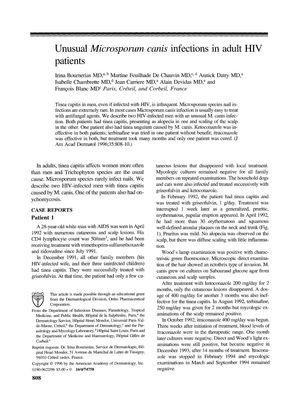Unusual Microsporum Canis Infections in Adult HIV Patients
November 1996
in “
Journal of the American Academy of Dermatology
”

TLDR Itraconazole was effective in treating unusual M. canis infections in only one of two HIV-infected men.
Tinea capitis in men, including those with HIV, was rare, and Microsporum species nail infections were extremely rare. This study described two HIV-infected men with unusual M. canis infections. One presented with alopecia and the other with scalp scaling; one also had tinea unguium. Ketoconazole and terbinafine were ineffective, but itraconazole was effective after many months, curing only one patient.
